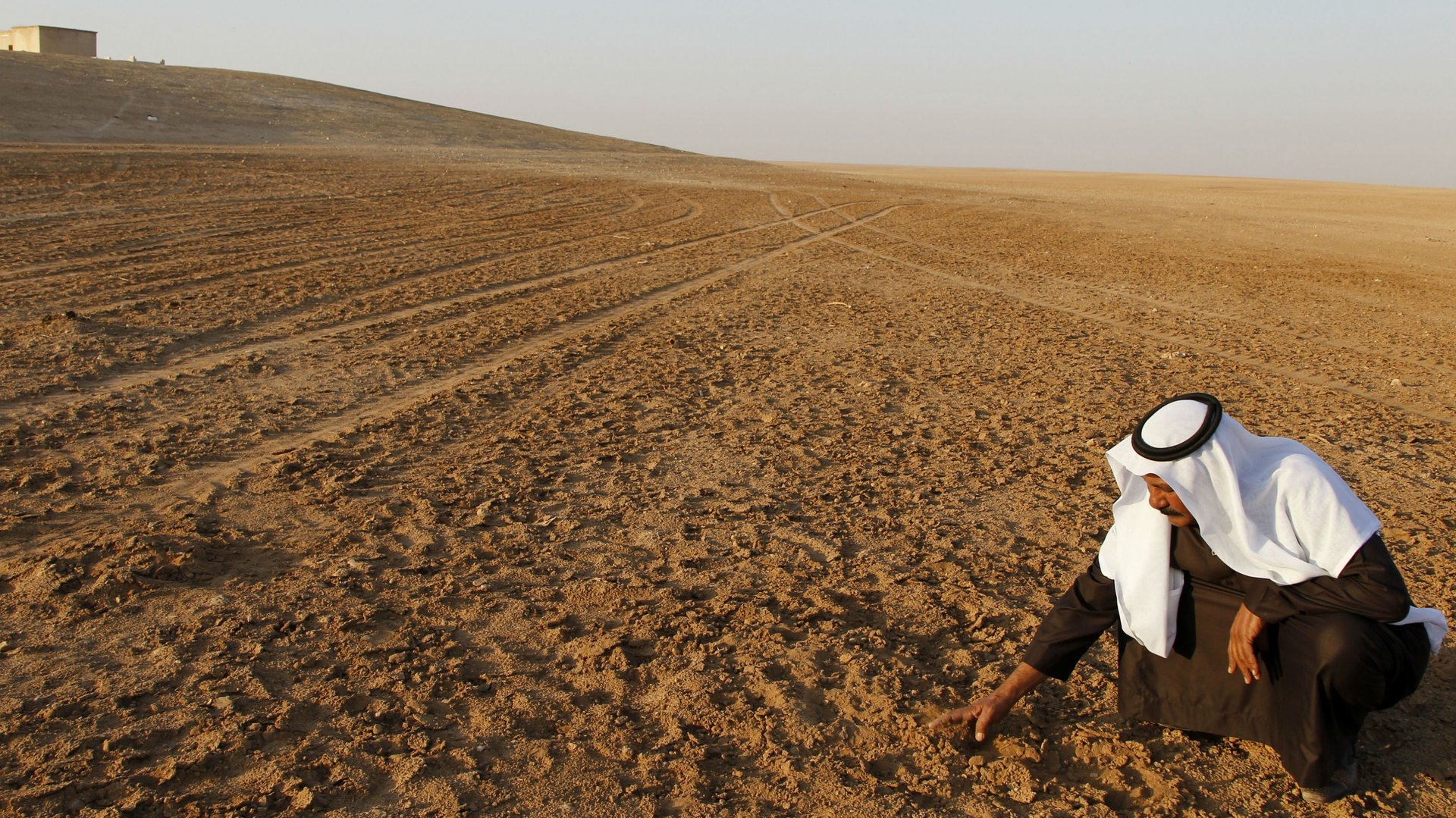Climate change definitely contributed to the conflict in Syria
Manmade climate change helped spark the Syrian Arab Spring. That’s the conclusion of a new study that shows how global warming caused an unprecedented drought in Syria starting in the winter of 2006-07, and contributed directly to the popular uprising in that country in 2011.


Manmade climate change helped spark the Syrian Arab Spring. That’s the conclusion of a new study that shows how global warming caused an unprecedented drought in Syria starting in the winter of 2006-07, and contributed directly to the popular uprising in that country in 2011.
Colin Kelley, a climate scientist at the University of California and one of the study’s authors tells Quartz that one of their starting points was a series of pieces from New York Times columnist Thomas Friedman. In 2012, Friedman wrote, “tensions over land, water and food are telling us something: The Arab awakening was driven not only by political and economic stresses, but, less visibly, by environmental, population and climate stresses as well.”
The drought that began in 2006 was the worst on record and was “more than twice as likely as a consequence of human interference in the climate system,” shows the report, which was published today in the journal, Proceedings of the National Academy of Sciences (PNAS).
The country was not prepared for such extreme conditions and was more sensitive to them than its neighbors, Turkey and Iraq. Syrians were “vulnerably tied to the land,” says Shahrzad Mohtadi, author of the socio-political component of the study.
Decades-long bad agricultural policies exacerbated the effects of the dry period. In the 1970s, president Bashar al-Assad’s father, Hafez, pushed for the country’s agricultural self-sufficiency rather than sustainability, says Mohtadi. Syria depended on wheat and cotton, both crops which require a lot rain. The quotas for agricultural production were high, which led to the digging of countless, unregulated water wells. The severe, three-year drought depleted the country’s unchecked water resources and caused “widespread crop failure,” the report says.
Entire families began migrating from farm land to urban peripheries, which were already trying to accommodate the 1.5 million Iraqi refugees. In 8 years, according to the report, the urban population rose by 50%. The drought caused exorbitant hikes in food prices, while president Bashar al-Assad’s economic liberalization policies included cutting fuel and food subsidies. “He really turned a blind eye to the urban periphery areas,” says Mohtadi. All of this bred increasing discontent that led to the revolution.
Observers, climatologists and political scientists have long suspected that drought contributed to the uprising, but the new study took a step-by-step look at the climate science of the phenomenon. Combining model experiments and observation of a 100 year period, the scientists concluded that the stress on the climate in the region was the result of an increase of greenhouse gasses. “There’s not really any natural evidence to explain these [drying] trends,” says Kelley.
The region will continue getting dryer and hotter, says Kelley. And given events in Syria, it is crucial to increase the role of climate adaptation policies in developing countries, adds Mohtadi, and not just focus on the mitigation of greenhouse gas emissions.